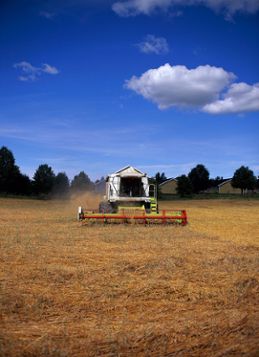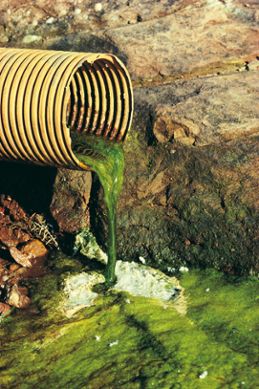Most of nutrients found in the Skagerrak and Kattegat are transported by currents from the southern North Sea along the Danish coast and from the Baltic via the northward flowing currents through the Sound and the Belt.
Thus the greater part of the nutrients that affect the Skagerrak and the Kattegat do not come from Sweden, although local rivers and watercourses do affect the local coastal areas.
At present, the same applies for the Baltic where the countries in the east and south emit most of the nutrients to Baltic Proper while local coastal areas are mainly affected by a country’s own emissions.
Poor recovery
The flow of nitrogen into the sea from Swedish drainage areas accelerated during the 1970s, most likely due to an increase in nitrogen deposition from the atmosphere and increased use of nitrogen fertilisers in farming. A variety of different measures have been taken to reduce the nitrogen load but despite this the Baltic has not yet shown any long-term reduction.
The phosphorus load from the rivers has not noticeably reduced, despite a significant reduction in phosphorus fertilisation. Emissions of phosphorus directly into the sea along the Swedish coast from point sources such as towns and industries have also been significantly reduced due to improved sewage treatment, but these emissions only account for a small amount of the total nutrient load that ends up in the sea.
Farming

A significant source of eutrophication for Sweden’s lakes and coastal waters is nutrient leakage from arable farming. The contribution from these areas is much more difficult to reduce than emissions from towns, industries and other point sources.
In order to improve harvests, fields and meadows are enriched with both organic and synthetic fertilisers. The nutrients cannot always be absorbed by the plants and leach into the soil, ending up in the groundwater or draining away through ditches to streams and rivers, before eventually ending up in coastal areas. Fertilizers also give off atmospheric ammonia which eventually falls back to earth with rain over both land and sea.
Forests
When deforestation occurs over large areas, there are no longer any trees to absorb or bind nutrients in the soil. Without forest there is also an increase in the flow of water on the ground which leaches out minerals and nutrients more rapidly, eventually taking them to rivers, lakes and the sea.
Sewage

Sewage water from towns, houses and industries contain a lot of nutrients, most of which end up in the sea. The purpose of sewage works is to treat and clean the dirty water we produce before it is released into the nearest watercourse.
Larger sewage works can remove a significant amount of the phosphorus in the sewage water. Different chemicals can be added that cause clumping that can then be removed. Smaller sewage works do not always have this equipment.
Nitrogen is more difficult to remove from sewage, and urine contains a lot of nitrogen. Some larger sewage works store the water in huge dams before releasing it. Plants and bacteria in the dams can reduce both phosphorus and nitrogen.
Many other countries do not have efficient sewage works and in some cases the raw sewage is released directly without any treatment.
The atmosphere
Combustion and electrical discharge (lightning) are the largest sources of nitrogen oxides (the gases NO, NO2 and NO3, referred to as NOx) in the atmosphere while ammonia evaporation from farming causes the largest emissions of ammonium-nitrogen to the atmosphere.
The contribution from transport vehicles forms the largest part of the combustion emissions and about half of all NOx emissions come from traffic. The nitrogen load on the sea is affected by the nitrogen pollution in the atmosphere.
Sediment
Lack of oxygen on the sea floor, which can be caused by eutrophication, affects the oxidised iron in the sediment so that it becomes reduced. The reduction of oxidised iron in the sediment releases phosphorus from into the waters above.